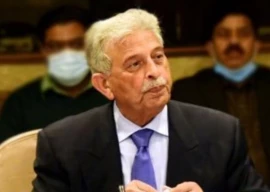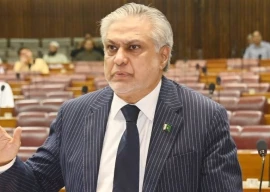
Fata is situated on a geo-political tectonic plate; it is located between Afghanistan and the districts of Khyber-Pakhtunkhwa, covers an area of about 27,000 sq km and has a population of 3.5 million, more than 60 per cent of whom live on or below the poverty line of incomes of $1 or less. Since Fata is a bridge between two weakly administered countries, border controls are weak and it is easy to enter and exit from the region, thus providing space to criminal networks of all sorts. In Fata, everything is temporary and in a flux and life is Hobbesian in the sense of being “brutish and short”. Any tribesman who has skills or education wants to leave this hostile landscape. The problems of the inhabitants are further compounded because of the pressures from the so-called Great Game being played out in the region.
The reason why Fata is important to Pakistan and the international community derives from its function as the centre for training of jihadis whose aim is to attack the West. Pakistan is accused by the US of providing safe havens in the area to terrorists and militants. At the same time, the CIA has undertaken a secret counter-terrorism war inside Fata through drone attacks and 3,000 strong Afghan manned pursuit teams operating alongside more than 100,000 Pakistani military personnel. Yet, the threat to US forces in Afghanistan as well as Pakistan has only increased. The opinion in both the US and Europe is that the war in Afghanistan against the Taliban cannot be won. Existence of safe havens in Fata is cited as the main contributory cause. Unfortunately, the nature of the terrain, tribes and geography ensure that no state is able to control the tribal areas — let alone Pakistan that is, at best, a middling state.
The dean of jihad, Sheikh Abdullah Azaam, in his famous fatwa on “Defense of the Muslim Lands” delivered in 1984, spoke about the centrality of Fata to the jihad cause. In it, the Sheikh declared that the open border between Afghanistan and Fata is not under political influence and thus forms a protective shield for the mujahidin and is a great asset. Ironically, isn’t lack of Fata reform in line with the Sheikh’s declaration? Fata’s terrain and geography pose formidable challenges in controlling an area that is mountainous, underdeveloped and inhabited by fighters.
Britain in its heyday as a superpower faced similar difficulties in controlling the tribes, when it took charge of the region in 1849 from the Sikhs. It was left to experienced British officers seconded to the Sikh Durbar to formulate the tribal policy after annexation. Edwards in Bannu, James in Peshawar, Lumsden in Mardan, Abbot in Hazara and Taylor in Derajat administered up to the hills. The tribes were not annexed. Under the ‘close border policy’, they administered themselves but were manipulated from the neighbouring districts by British officers; the tribes were punished by fines, blockades and punitive expeditions if they raided the districts. After the Second Afghan War in 1878, the British moved forward into Fata and created agencies. However, this ‘forward policy’ too failed to provide better control until their departure in 1947.
Evidently transforming Fata is a complicated matter. There are certain good possibilities for spearheading reform like the extension of the Political Parties Act, Reform of the FCR and extension of human rights. However, they must be part of a larger array of reforms based on creating private property rights, political empowerment, education and economic development of the tribesmen. Until this transformation is complete, safe havens and training camps are likely to remain in Fata.
Published in The Express Tribune, November 17th, 2010.






























1714024018-0/ModiLara-(1)1714024018-0-270x192.webp)









COMMENTS (6)
Comments are moderated and generally will be posted if they are on-topic and not abusive.
For more information, please see our Comments FAQ